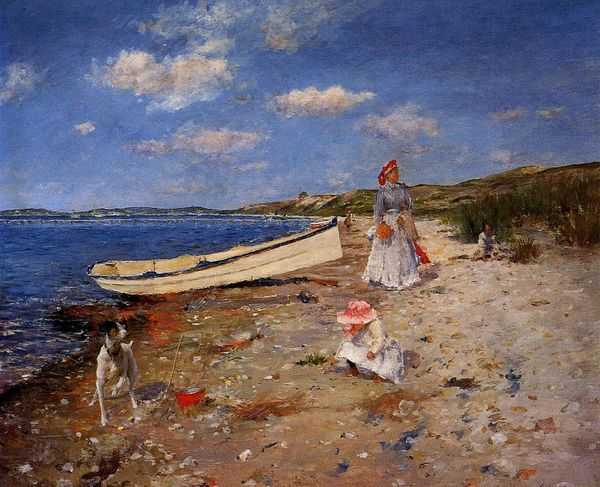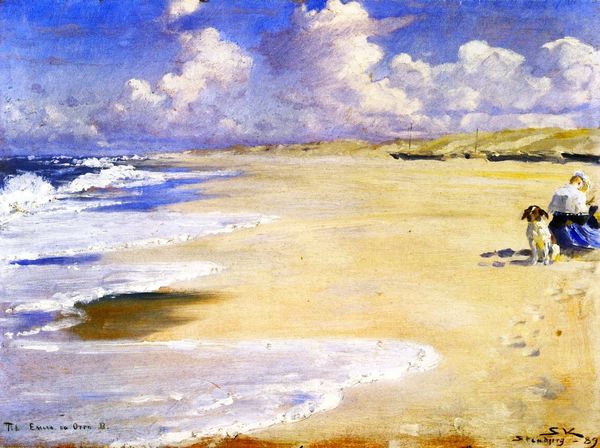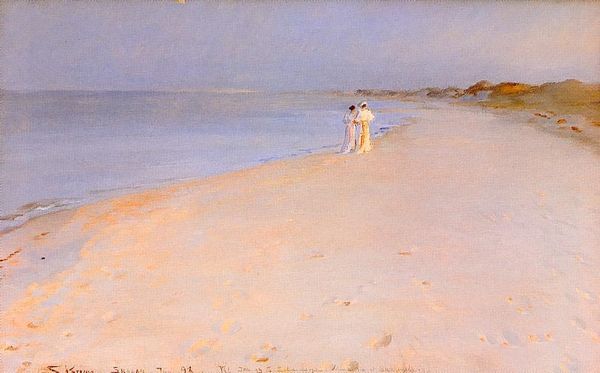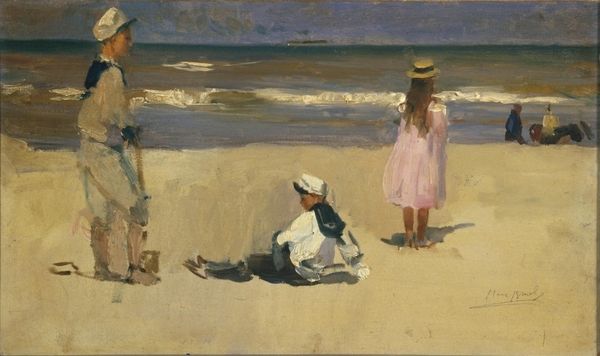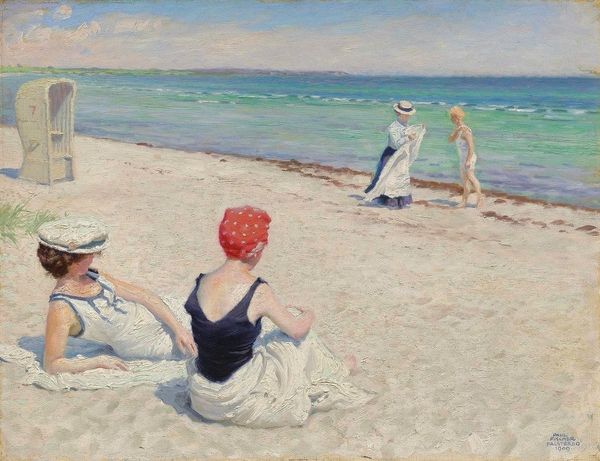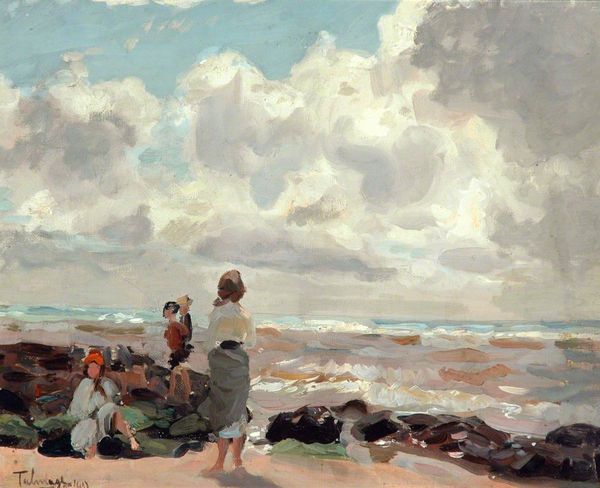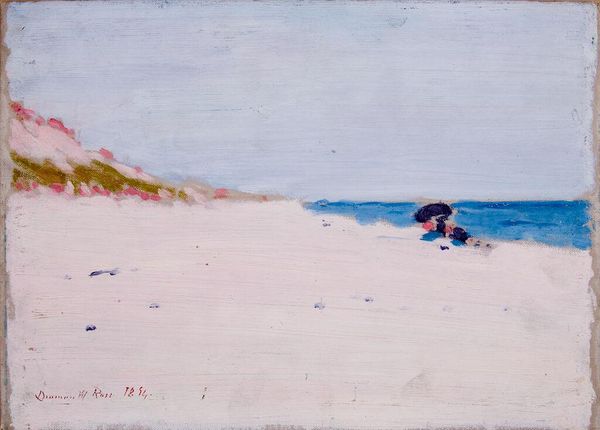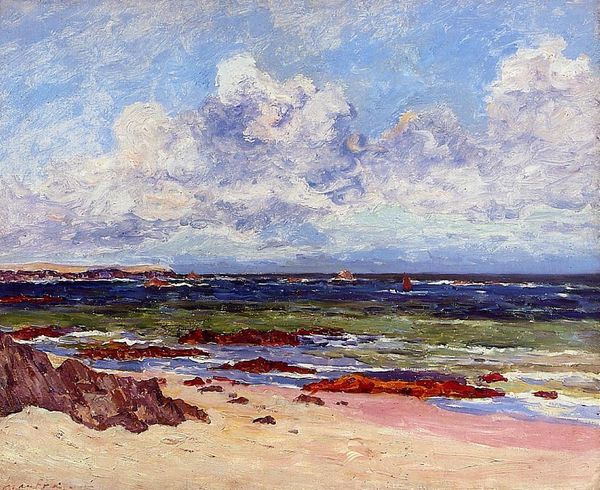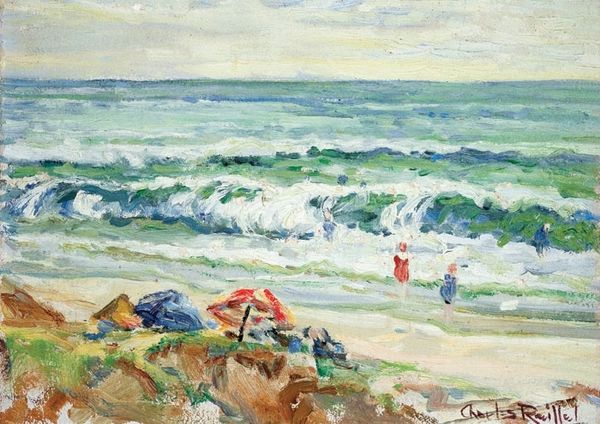
Copyright: Public domain
Curator: William Merritt Chase, known for his Impressionistic style, captured this serene scene, Shell Beach at Shinnecock, in 1892. What's your initial take? Editor: I’m struck by how ephemeral it feels. The loose brushstrokes give a sense of movement to the water and the light seems to shift even as I look at it. Curator: The setting, Shinnecock, on Long Island, was a significant artist colony at the time. This piece reflects the rising middle-class leisure, doesn’t it? Women and children at play near the sea. Editor: Precisely. And children gathering shells carry a potent image—gathering relics that connect childhood to a larger cycle of nature. Curator: The dresses the women are wearing point toward restricted mobility in the era, wouldn't you agree? Middle class standards still expected specific social and clothing expectations. Editor: The white dresses set them apart in an immediate way—visually aligned with innocence and purity, common symbolic messaging in similar artworks of the time. Curator: True, it seems an intentional echo. The ocean could also carry the weight of that era: opportunity, and escape. But, the leisure these figures enjoy also masks labor that remains out of view. Editor: Absolutely. There's also the shells, remnants of life transformed into objects. Their pale presence could remind viewers about transformation and resilience over time. Curator: And let’s note that the brushstrokes evoke that atmosphere but they could just as easily obscure class disparity. This artistic technique might invite scrutiny through postcolonialist theory too. Editor: Indeed. The visual appeal is clear. It's dreamlike. Yet the symbol invites other ways of knowing. Thanks for encouraging my thoughts. Curator: Absolutely. It's fascinating to see how various lenses impact my understanding of this painting too.
Comments
No comments
Be the first to comment and join the conversation on the ultimate creative platform.

